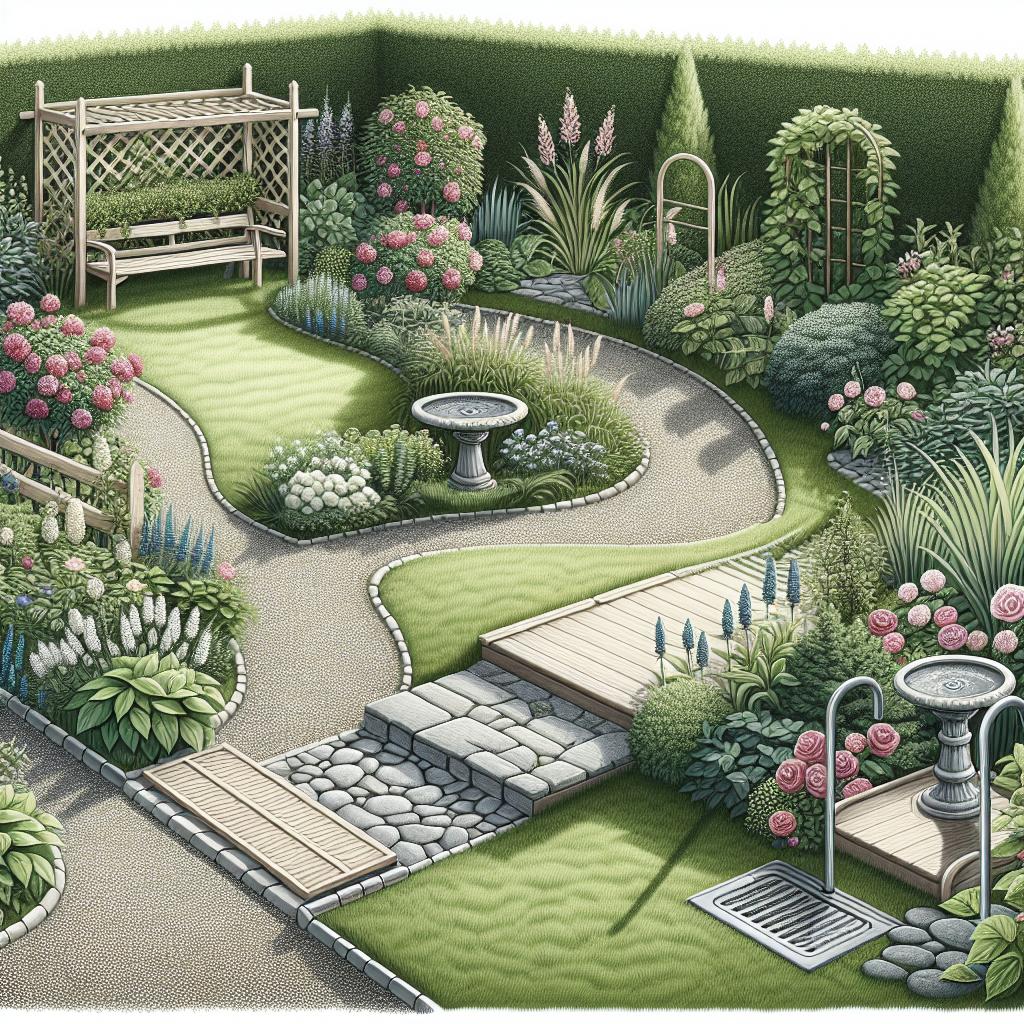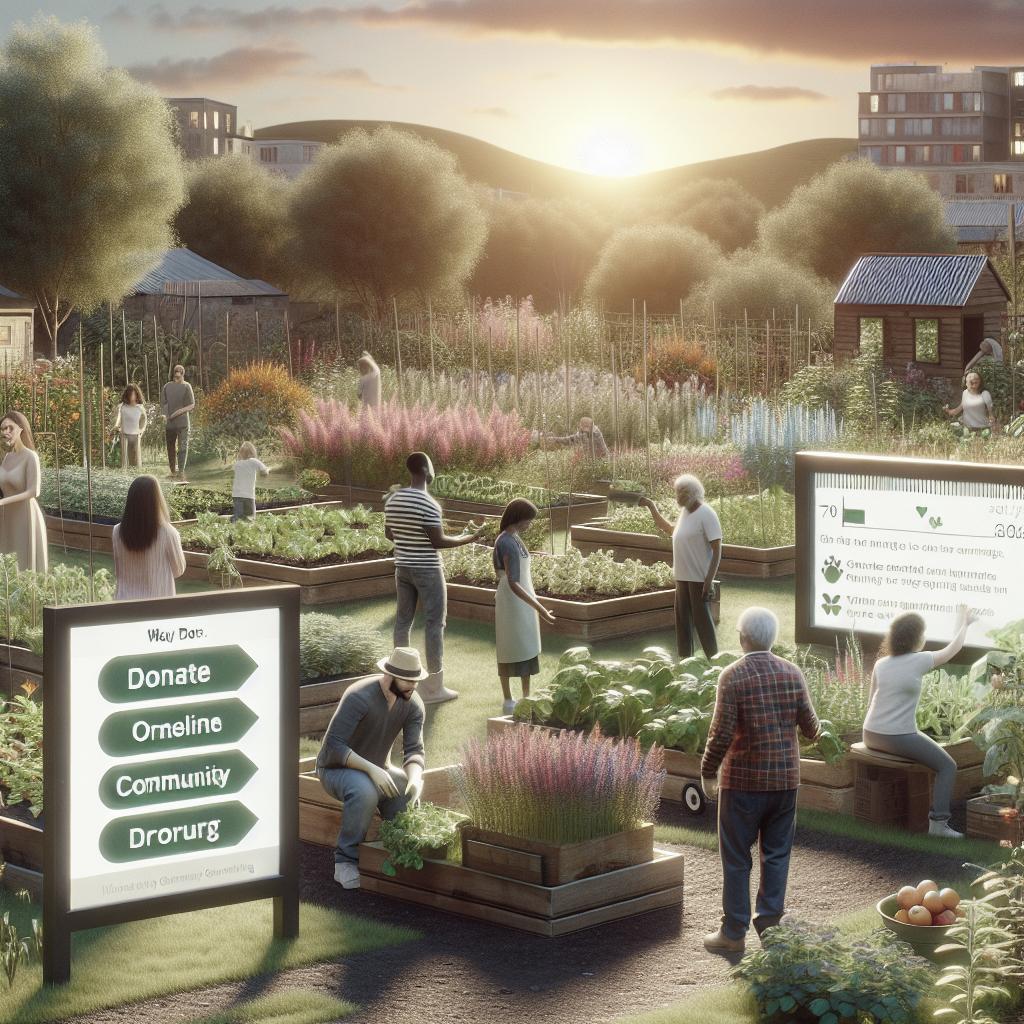8 ideas for creating an accessible garden
Creating a garden that everyone can enjoy, irrespective of physical ability, is an act of love and inclusivity. Accessible garden paths enhance not only the aesthetic appeal but also the functionality of garden spaces, making them usable for people with mobility issues, children, and the elderly. This blog post offers effective ways to maintain garden paths and optimize their accessibility. We will explore everything from understanding the gardener’s needs to illuminating pathways, facilitating easy watering, and selecting suitable plants. Dive into these practical strategies to make your garden both captivating and accessible.
1. Get to know the gardener
The first step in creating an accessible garden is understanding the specific needs of the gardener who will use it. Whether you are designing the garden for yourself or someone else, including children, elderly individuals, or people with disabilities, it is crucial to recognize their unique requirements. For instance, children might need safer pathways, while elderly individuals may require handrails for extra support.
Engage in conversations to gather insights into their preferences, physical limitations, and gardening goals. This initial understanding will help you create a garden that is both functional and enjoyable. Taking the time to know the gardener enables you to integrate personalized elements that can significantly enhance the gardening experience.
2. Build easy to navigate paths
Creating paths that are easy to navigate is essential for ensuring accessibility. Consider using materials that offer a stable and non-slip surface, such as brick, concrete, or pavers. Avoid using gravel or loose stones that might be difficult for wheelchairs and walkers to traverse. The paths should be wide enough to accommodate mobility aids, with a recommended minimum width of 36 inches.
Additionally, pay attention to the layout of the paths. Implement gentle curves rather than sharp turns, and avoid inclines that could pose a challenge. Pathways should be intuitive and lead logically to different parts of the garden, ensuring that visitors can easily find their way without unnecessary detours.
3. Allow for regular rest stops
Rest stops are vital in accessible garden design, especially for people with limited stamina or mobility issues. Strategically place benches or other seating options along the paths to provide a place to relax and enjoy the garden. Ensure that the seating is sturdy, has armrests, and is at a comfortable height for ease of getting up and sitting down.
Moreover, these rest stops can be incorporated with aesthetic features such as shade-providing trees, fragrant plants, or water features. These elements not only enhance the garden’s beauty but also make the rest stops desirable locations for taking breaks.
4. Deal with level changes
Navigating level changes can be particularly challenging for individuals with mobility issues. Where possible, aim to minimize steps and slopes. If steps are unavoidable, consider installing ramps with a gentle incline to accommodate wheelchairs and walkers. The recommended slope ratio is 1:12, giving one inch of rise for every 12 inches of run.
For more significant level changes, terracing the garden might be a practical solution. This involves creating flat, level areas with retaining walls and connecting them with ramps or wide, shallow steps. Handrails along these pathways can also provide additional support and safety.
5. Make a feature of handrails
Handrails can significantly improve the navigability of a garden for those with reduced mobility. Rather than viewing them solely as functional aids, consider them an opportunity to enhance your garden’s aesthetic appeal. Use materials that complement your garden’s style, such as wrought iron, wood, or even natural-looking materials like bamboo.
The placement of handrails should be strategic, focusing on areas with inclines, steps, or uneven terrain. Ensure that they are at a comfortable height and are equipped with a smooth finish to prevent injuries. Properly maintained handrails not only provide safety but also add a touch of sophistication to your garden.
6. Illuminate the way with lighting
Proper lighting is crucial for garden accessibility, particularly during dusk and nighttime. Install pathway lights to ensure the entire length of the garden paths is visible. LED lights are an energy-efficient option that provides adequate illumination without producing a lot of heat.
Consider adding motion-sensor lights that activate when someone walks through the garden, offering convenience and additional security. Lighting fixtures can also serve as decorative elements, adding another layer of charm to your garden. Make sure the lighting intensity is sufficient to prevent tripping hazards without being overwhelming.
7. Make watering easy
Watering can be a physically demanding task, so incorporating easy-to-use systems is important for an accessible garden. Drip irrigation systems and soaker hoses are efficient and minimize the need for manual watering. These systems can be connected to timers to automate the process, ensuring that plants receive the right amount of water without constant monitoring.
For those who prefer manual watering, consider installing water spigots at convenient, accessible heights throughout the garden. Lightweight, retractable hoses can also make the task easier for people with limited strength or mobility, reducing the physical effort required to keep the garden hydrated.
8. Consider your planting
The selection of plants plays a crucial role in creating an accessible garden. Opt for low-maintenance plants that require minimal care, such as established perennials and shrubs. Raised garden beds can make tending to plants easier for individuals who have difficulty bending down. These beds should be at a height that is comfortable for the gardener, typically between 24 and 36 inches.
Furthermore, choose plants with sensory appeal—those that smell good, look colorful, and feel interesting to touch. This sensory diversity can provide a richer experience, making the garden more enjoyable and therapeutic. Avoid plants with thorns or that may cause allergic reactions, ensuring the garden remains a safe space for all.
Further inspiration
Creating an accessible garden is a rewarding endeavor that enhances usability for everyone. By considering the tips and strategies discussed here, you’ll be well on your way to designing a garden that is both functional and beautiful. For further inspiration, look into community gardens, horticultural therapy programs, and accessibility design resources that can offer additional insights and ideas.
Share this:
If you found this post helpful, please share it with others who might benefit from these practical tips for maintaining accessible garden paths and creating inclusive outdoor spaces. Together, we can foster a more inclusive gardening culture.
Like this:
If you enjoyed reading this article, please like it and leave a comment. Your feedback is valuable and helps us bring more useful content. Let us know your thoughts or share your own tips for maintaining accessible garden paths!
Summary of main points
| Point | Summary |
|---|---|
| Get to know the gardener | Understand the gardener’s specific needs and preferences to tailor the garden design for optimal accessibility. |
| Build easy to navigate paths | Create stable, wide paths with gentle curves and avoid sharp turns or inclines. |
| Allow for regular rest stops | Incorporate seating options along paths for breaks, ensuring they are comfortable and aesthetically pleasing. |
| Deal with level changes | Minimize steps and slopes; use ramps and terracing when necessary along with handrails for support. |
| Make a feature of handrails | Install aesthetically pleasing handrails made from materials that complement the garden’s style. |
| Illuminate the way with lighting | Use pathway lights and motion-sensor lights for visibility and security, employing energy-efficient options like LED lights. |
| Make watering easy | Implement drip irrigation systems or install accessible water spigots to simplify the watering process. |
| Consider your planting | Select low-maintenance, sensory-rich plants and use raised beds to make gardening more accessible. |


